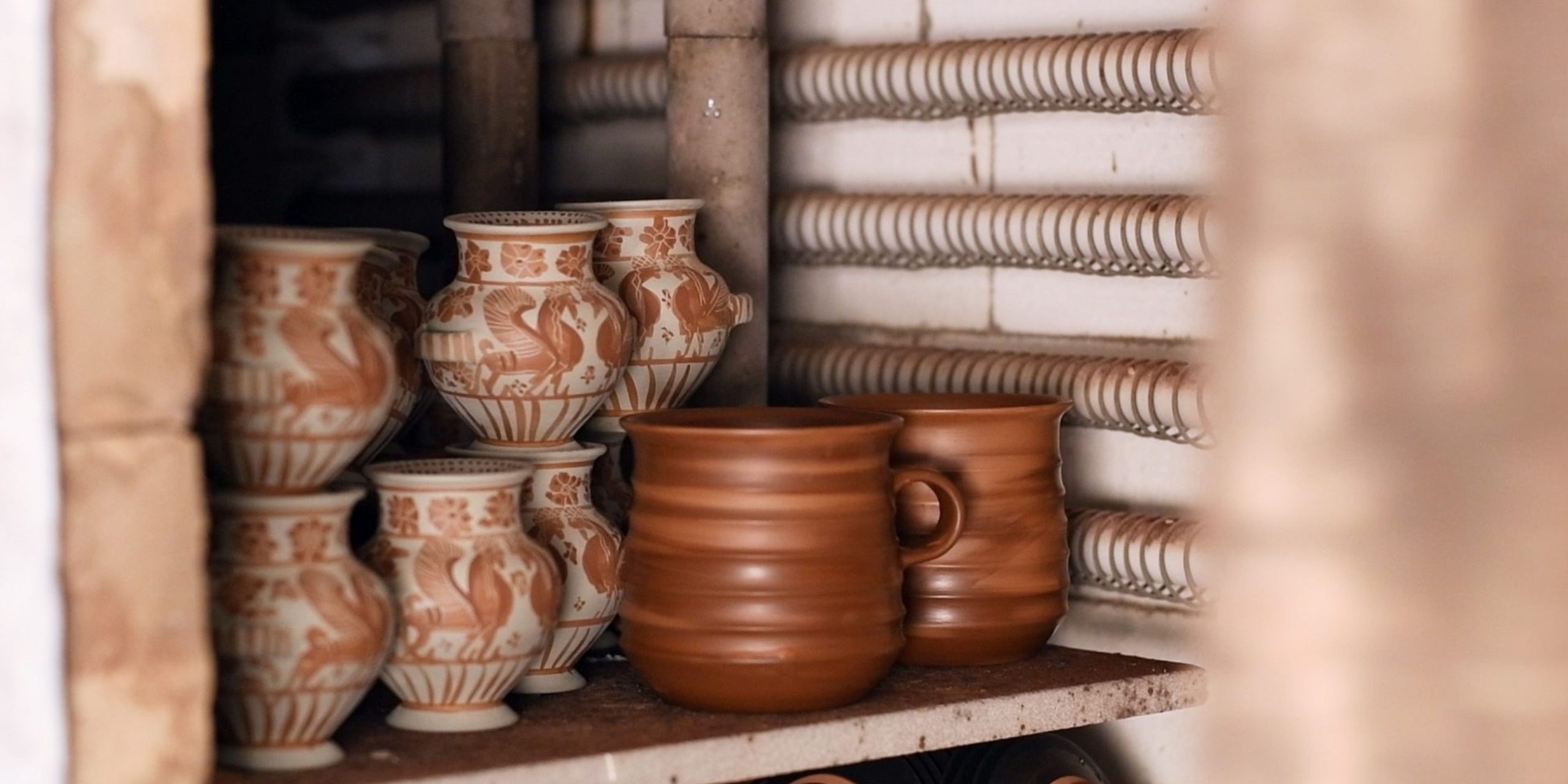
Ancient Greek pottery still inspires people today.
Key Highlights
- Old Greek pottery is a very unique and important art form from ancient times.
- The four main styles are Geometric, Corinthian, Athenian Black-figure, and Athenian Red-figure.
- Old Greek pottery was not just for decoration; it had practical uses in daily life and in religious ceremonies.
- Amphorae, kraters, and kylixes are some of the most common and well-known types of Greek pottery.
- With their detailed designs and different themes, these ancient vessels give us important clues about ancient Greek society, beliefs, and art.
Ancient Greece is well-known for its contributions to thinking, democracy, and art. It has left an important mark on human history. One of its big achievements is old Greek pottery and ancient Greek pottery. This pottery highlights the Greeks’ talent in making things. They took everyday items and turned them into beautiful and meaningful works. The designs go from simple shapes to detailed pictures of myths and everyday life.
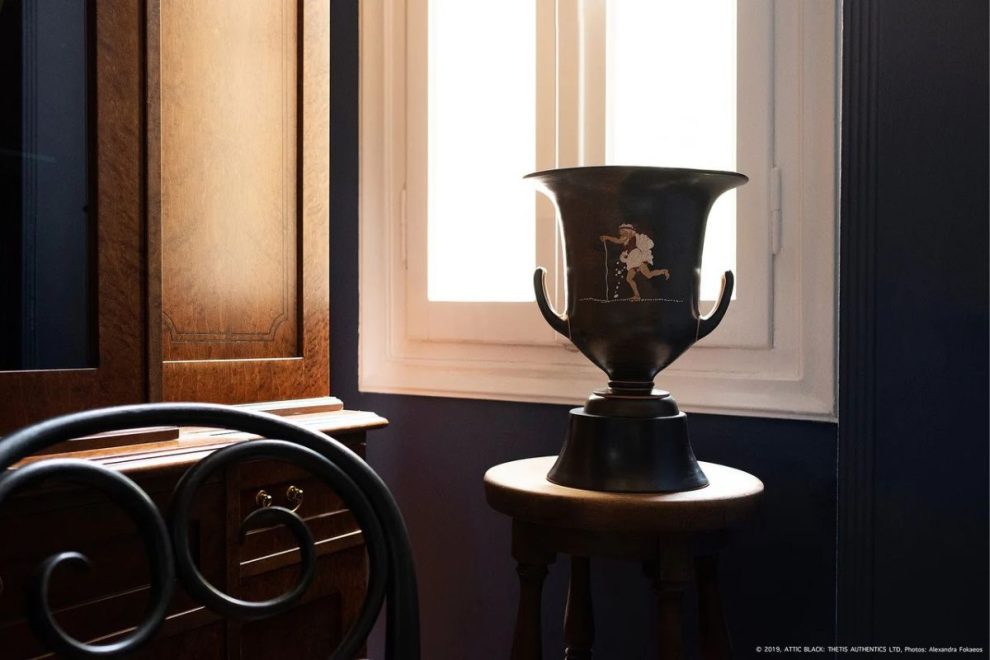
Old Greek Pottery in Ancient Civilization
Greek pottery stands out in the history of old civilizations. These ceramic pieces are more than just containers. They show us what ancient Greek culture was. They reflect their beliefs, style, and daily life. Greek pottery matters for more than its appearance. These durable items link us to history. They show us the lives, traditions, and social habits of the ancient Greeks.
The role of old Greek pottery in daily life and religious rituals
Ancient Greek pottery was not only for decoration. It played a big role in everyday life and was important for religious events. These pots helped store and transport items like wine, oil, and grain. They also marked graves in burial customs. This shows both their usefulness and their deep meaning. In daily life, people in ancient Greece used many kinds of pottery for cooking, eating, and keeping food. Amphorae had big, round bodies and narrow necks. They were perfect for moving and storing liquids. Kraters were wider and not as deep. They worked as mixing bowls for wine and water at symposia, which were social events for rich men.
Pottery played a key role in religious rituals. Lekythoi were small pots that held fragrant oils for the dead. Larger kraters and amphorae were important for libations, which are liquid offerings poured to honor the gods.
How old Greek pottery reveals the socio-economic status of ancient Greeks
Looking at old Greek vases reveals a fascinating part of ancient Greece. They show how pottery connects to wealth and social status. The skill of the maker, the details in the design, and the kind of clay can indicate the owner’s wealth and rank. Vases that are very decorated, especially with detailed stories from myths or tricky shapes, were expensive to make. So, only the rich could afford them. These beautiful pieces were often made from high-quality Attic clay and bright colors. They added beauty to the homes of wealthy people and displayed their wealth.
Simpler vases with fewer decorations were easier for regular people to find. These vases were made from rough clay. They may not have the fancy designs of richer vases, but these plain pieces tell us a lot about the daily lives and tastes of normal Greeks.
How were different types of Greek pottery used in ancient times?
The ancient Greeks created many kinds of pottery. Each type had its own purpose for use at home and in rituals. By learning about these shapes, we can better understand their daily life and traditions. One well-known shape is the amphora. It was made to hold and transport liquids and dry items like grain and olives. It was big and had strong handles, making it great for home use and for trade over long distances. Another key type is the krater. It has a big opening and can carry a lot. It was important at symposia, where people mixed wine and water.
There were smaller vases, like the kylix. A kylix is a shallow drinking cup that has two handles. It was popular at symposia and often showed pictures of Dionysus, the god of wine and celebrations. Another type is the lekythos. A lekythos has a long shape and a narrow neck. These were mainly used to hold valuable oils and perfumes, often connected to funeral rites.
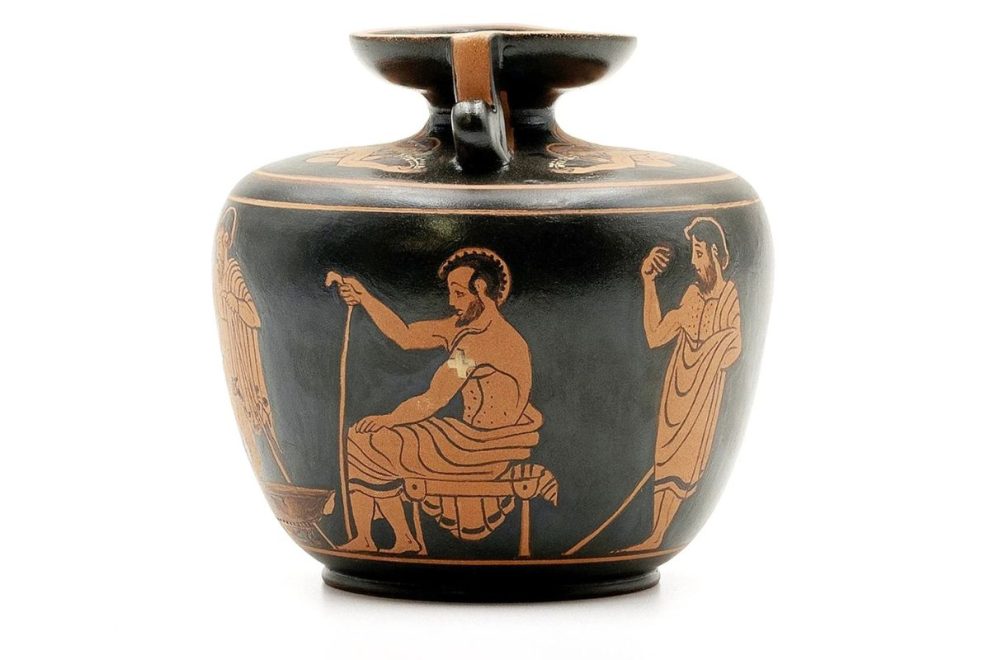
The Artistic Evolution of Greek Pottery
The history of Greek pottery is an interesting tale of creativity and change. It shows how things grew in Greece and the effect of nearby cultures. Greek pottery began in the simple Geometric period and later developed into the more advanced styles of the Classical era. Potters and vase painters in Greece always looked for new shapes, methods, and designs. They wanted fresh ideas but also honored old traditions. This mix created a pottery style that continues to inspire artists and art lovers today.
From geometric simplicity to the red-figure and black-figure pottery techniques
The first clear style of Greek pottery began in the Geometric period, about 900 to 700 BCE. It had simple geometric designs, like lines, triangles, circles, and meanders on the vases. People often used these early pots as grave markers. They really liked things to be neat and balanced. In the 7th century BCE, a new style called black-figure pottery showed up in Corinth. This method used black paint for figures on red clay. Artists would then carve details into the black, which showed the red color below. This made a strong contrast, giving more detail and stories in the art. You could find scenes from myths, daily life, and tales from Homer.
Around 530 BCE, artists in Athens created a new style known as red-figure pottery. They changed from the black-figure method. Instead of painting the figures black, they made the background black and kept the figures in the red clay. They used thin brushes for adding finer details. This made the people and their clothes look more vivid and true to life.
Influences from neighboring cultures and their impact on Greek pottery styles
Greek pottery created its own styles, but it also borrowed ideas from nearby cultures. This shows how active the sharing of ideas was in the ancient world. Trade and contact with Egypt, the Near East, and Anatolia introduced new designs and methods to Greek artists. They mixed these new influences into their own art. A clear example is the Orientalizing period, which was around 700 to 600 BCE. During this time, Eastern designs such as sphinxes, griffins, and lotus flowers showed up in Greek art, mainly on pottery. These new designs worked nicely with the old Greek geometric patterns. This mix created a very interesting blend of styles.
You can see how Egyptian art affected early Greek vase paintings. In these paintings, human figures appear from the front. The detailed designs with flowers and leaf patterns that were popular in nearby art also shaped Greek pottery. This made Greek art fuller and more varied.
What makes Greek pottery unique compared to other ancient cultures?
Greek pottery is like other ancient ceramics, but it has special features that make it stand out. The Greeks wanted art that was not just lovely but also fresh. This choice led to pottery that is unlike the rest. One important quality is how well the Greeks showed the human form. On their vases, if they are in black or red figures, they depict people with great movement, beauty, and detail. This attention to human figures shows a key part of Greek culture. They valued the beauty and achievements of people. Greek pottery is famous for its great storytelling. It shows scenes from myths, important stories, and daily life in great detail. This art helps us understand what ancient Greeks believed, valued, and how they lived. These stories are full of meaning and symbols, turning vases into captivating tales.
Explore our Red-Figure Items here!
What Greek pottery pieces do collectors want the most?
For collectors and museums, some Greek pottery pieces are sought-after treasures. They are valued for their rarity, great skill, and history. These artworks are some of the best in Greek vase painting. They also give us useful insights into ancient art and culture. One of the most famous pieces is the Francois Vase. This large pot was made by the potter Ergotimos and painted by Kleitias around 570 BCE. The vase is over two feet tall and shows six complex images. These images show stories from Greek myths. Some of these include the Calydonian Boar Hunt, the Funeral Games of Patroclus, and the Return of Hephaestus to Olympus.
How has studying Greek pottery helped us learn about ancient Greek history?
Studying Greek pottery helps us learn about ancient Greek history. These sturdy pots are often found broken, but they link us to a lost civilization. They reveal their beliefs, values, and everyday lives. The paintings on vases serve as records we can see. They help us learn more than what we read in old texts and carvings. The pictures on the vases show us their religious practices, stories, sports, social habits, clothing, and even the appearance of their cities. Greek pottery was discovered all around the Mediterranean. This shows how vast their trade was and how they affected other cultures. By studying the styles, designs, and making of pottery, we can understand better how Greece connected with other ancient societies.
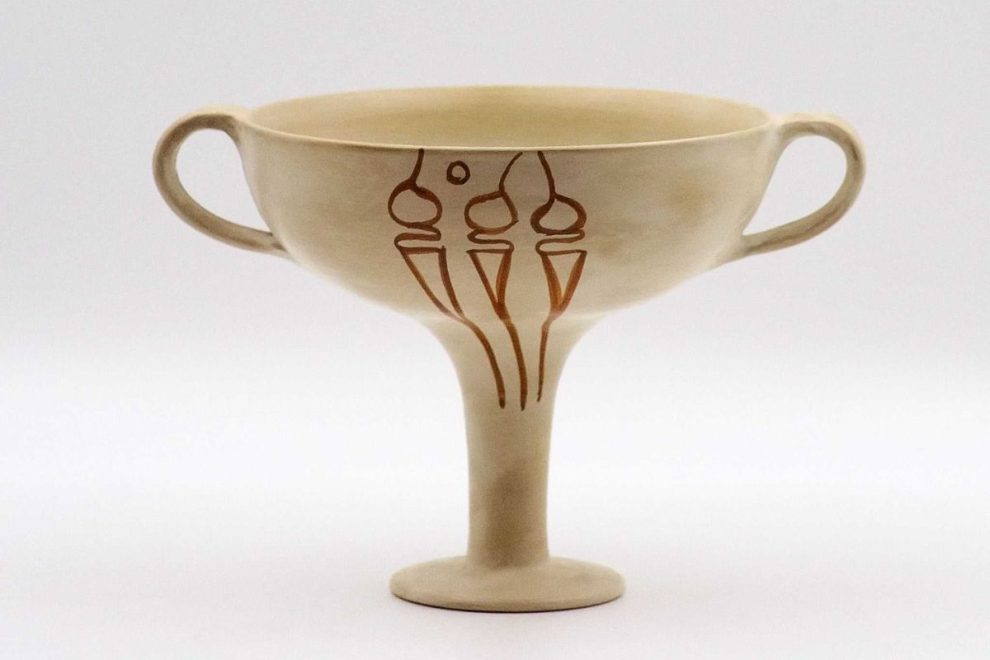
Major Types of Greek Pottery
Greek pottery mattered a lot, not only for its beauty but also for how it helped in daily life. The Greeks created various pots, each made for a specific purpose. This demonstrates how smart they were at making designs that fit their daily needs. Greek pottery had many uses. It was helpful for storing and transporting goods. People also used it to serve wine during gatherings with friends. Each type of Greek pottery shows how its shape matches its purpose. Let’s explore some popular and common types.
Amphorae: The useful container for storing and moving things.
Amphorae are the best-known kind of Greek pottery. They are big jars with two handles. People use them for storing and moving items. Their oval shape gets narrower at the bottom. This design helps them stay upright and makes them great for storage. The way amphorae are made shows how helpful they are. The two handles are on different sides. This makes it easier to lift, carry, and pour out what is inside. The narrow opening helps stop liquids from spilling or disappearing. Amphorae come in different sizes. Some are small, known as amphoriskoi, and are used for perfumes and oils. Others are much larger, reaching over three feet tall, and can hold a lot of wine, olive oil, or grain. Amphorae were very popular in trade. They have been discovered at many archaeological sites throughout the Mediterranean. This shows how far ancient Greek trade and culture spread.
Kraters: Mixing wine and water at social events
Kraters played a big role in ancient Greek life. They were large bowls used to mix wine and water at symposia. These were fun gatherings of rich men. The bowls usually had a base and were made for serving wine. Their large size and wide opening made it easy to mix the wine and water, often using a big spoon or a wine jug. The way the krater is shaped also helped serve the mixed wine to guests who relaxed on couches. Many kraters had fun images of parties, myths, or sports on them. These designs show how important symposia were in ancient Greek culture.
Kylix: The drinking cup with distinctive style
The kylix is a wide, shallow drinking cup that has two handles. It was popular at ancient Greek parties, known as symposia. Its special shape has a broad bowl sitting on a stem. It also has two handles that go sideways. This design is lovely and practical. The kylix is shallow, so it cools the wine fast. Its two handles make it easy to hold and share with guests who lie on their sides. The stem raises the cup, adding a bit of elegance to wine drinking. Kylikes often have designs of Dionysus, the god of wine. They also show stories from myths and daily life. These cups give us a clear view of the art and values of ancient Greeks.

Iconography and Themes in Greek Pottery
Greek pottery isn’t just nice to look at. It shares stories about what the ancient Greeks believed and how they lived every day. The patterns and images on the pots provide us with important information about their myths, religions, and social habits. You can see pictures of large battles, gods aiding humans, everyday tasks, and sports events. Greek pottery is an interesting way to feel what life was like for these old people. It helps us feel close to their stories and experiences from the past.
Mythological scenes show Greek beliefs and values.
Mythological themes were very important in Greek pottery. They showed how myths shaped ancient Greek values and beliefs. You could often find scenes from great poems like the Iliad and the Odyssey on vases. These scenes showed famous heroes like Achilles, Odysseus, and Heracles. The stories shown on pottery were about more than just decoration. They gave artists a way to share important ideas like bravery, honor, duty, and fate. They also highlighted how people connect with gods. For instance, the Labors of Heracles showed ideas of strength, hard work, and overcoming tough challenges. Also, pictures of gods and goddesses were common. They showed the gods doing things like going to banquets or helping people. These images showed the power of the gods and how it changed the lives of people.
Everyday life and athletic competitions in Greek vase painting
Greek vase painting did more than show myths. It also displayed daily life. This art captured simple moments and showed how important sports were in ancient Greek society. Paintings show workers, farmers, and women doing things like weaving or playing music at events. These images give us a close view of how everyday Greeks lived. The details in the paintings help us see their social lives and jobs. Athletic games, especially the Olympic Games, were very important to the ancient Greeks. Greek vase paintings often show athletes in action. They took part in many sports like running, wrestling, boxing, chariot racing, and discus throwing. This shows how much they valued physical strength and skill.
Can we identify the artist of a Greek pottery piece?
It can be difficult to know who created certain Greek pottery. Most of these vases do not have names on them. For this reason, art historians and archaeologists must look at the style to figure out which workshop or artist made them. A few pieces of Greek pottery have signatures. These signatures provide key details about the artists or their workshops. They commonly read “made by” or “painted by,” and show names like Euphronios, Exekias, the Berlin Painter, and the Kleophrades Painter. Today, these artists are known as great masters. By looking at the styles of these signatures, special artistic traits, and shared designs, researchers can learn more about the lives and art experiences of each potter and painter. This study helps us understand the personalities and creative work of these ancient Greek artists.
Greek women in pottery has recently become a focus of research, showing that women may have had a much bigger role in ancient Greek pottery making than we once believed.
To learn more about Pheidias, one of the most important sculptors of the classical era, read our blog article “Pheidias: The Iconic Ancient Greek Artist”
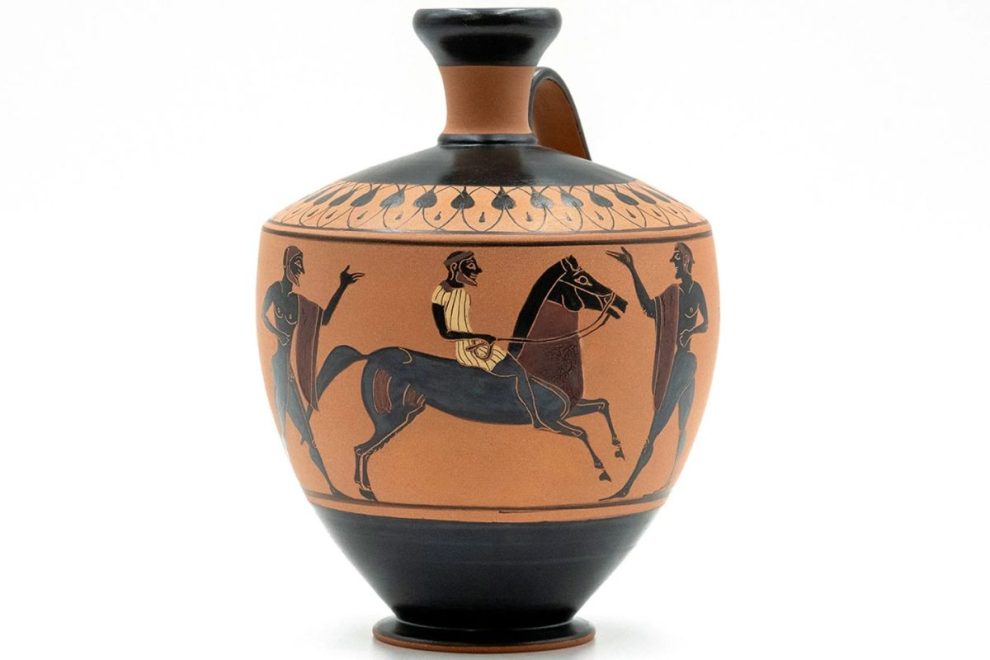
The Techniques Behind Old Greek Pottery
Creating beautiful Greek pottery was a careful process. It took hard work and skill. Potters needed to understand their materials and how to fire them correctly. Every step was important, from shaping the clay to achieving vibrant colors and strong finishes. Now, let’s check out the skills needed for ancient Greek pottery. We will highlight the key role of the potter’s wheel and how firing techniques make a difference.
The potter’s wheel changed how people make pottery.
The potter’s wheel is a tool that spins to shape clay pots smoothly. This tool was an important development in making pottery. Before it came along, pots were shaped by hand with pieces of clay. This process took a lot of time and made it hard to create pots that looked even or neat. The potter’s wheel can be powered by hand or foot. This helps potters work faster and create pots that are the same size and shape. They put a lump of clay on the wheel and press it with their hands. With practice, potters can make walls and shapes like jars and cups skillfully. This invention changed pottery making a lot. Now, potters could make pots with thinner walls and more detailed designs. This allowed them to create many types of pottery for homes and sell them easier.
Discover our Decorated Wheel-Made Items!
Firing techniques and their effects on pottery durability and aesthetics
The change from raw clay to strong, nice-looking pottery relied on an important step called firing. Ancient Greek potters used advanced methods for firing. They changed kiln temperatures and air conditions. This helped them achieve the colors, finishes, and strength they wanted. At first, pots were fired in open kilns. In these kilns, high heat turned soft clay into hard shapes. To get the black-figure or red-figure designs, Greek potters used a three-step firing method. This method changed between high oxygen and low oxygen conditions. This helped them create the colors they wanted. It was very important to watch the firing temperatures and the amount of oxygen. If it got too hot, the pottery could bend or melt. If it wasn’t hot enough, the pottery might become weak. To create pottery that looked nice and lasted for daily use, it was important to master these methods.
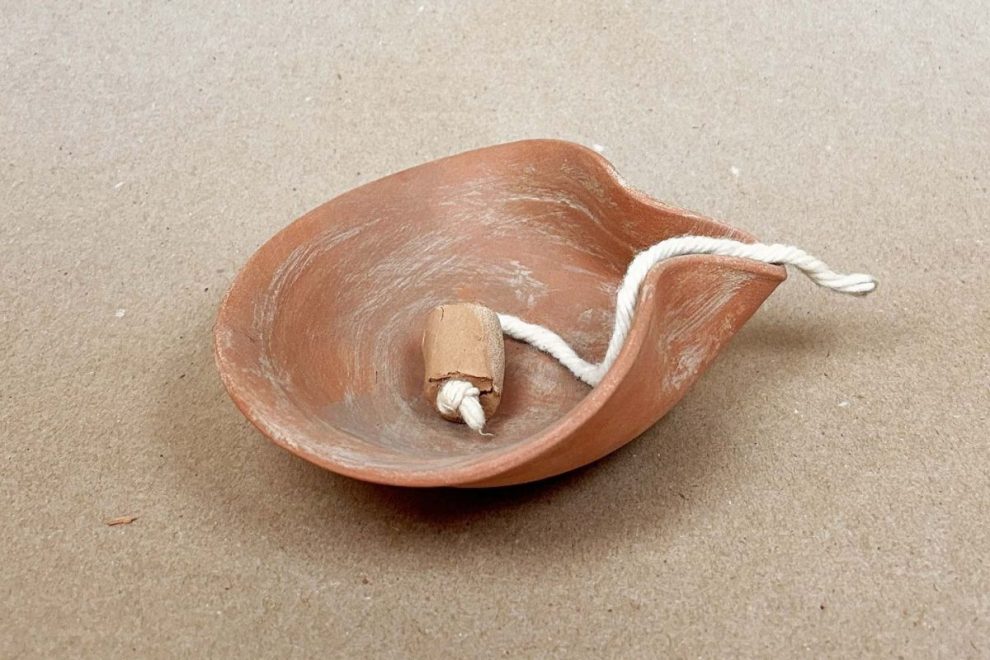
Final Reflections
Old Greek Pottery reveals the rich culture and art of ancient Greece. Its detailed designs tell mythological stories. The skills used to create these pots are remarkable. Greek pottery is an interesting subject to explore. By examining different types of ancient Greek pottery, art styles, and their effects on society, we can learn a great deal about daily life and beliefs of the ancient Greeks. Today, collectors still cherish Greek pottery, showing its beauty and significance. This helps us gain a deeper understanding of ancient Greek history and culture.
